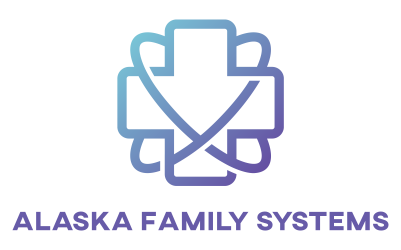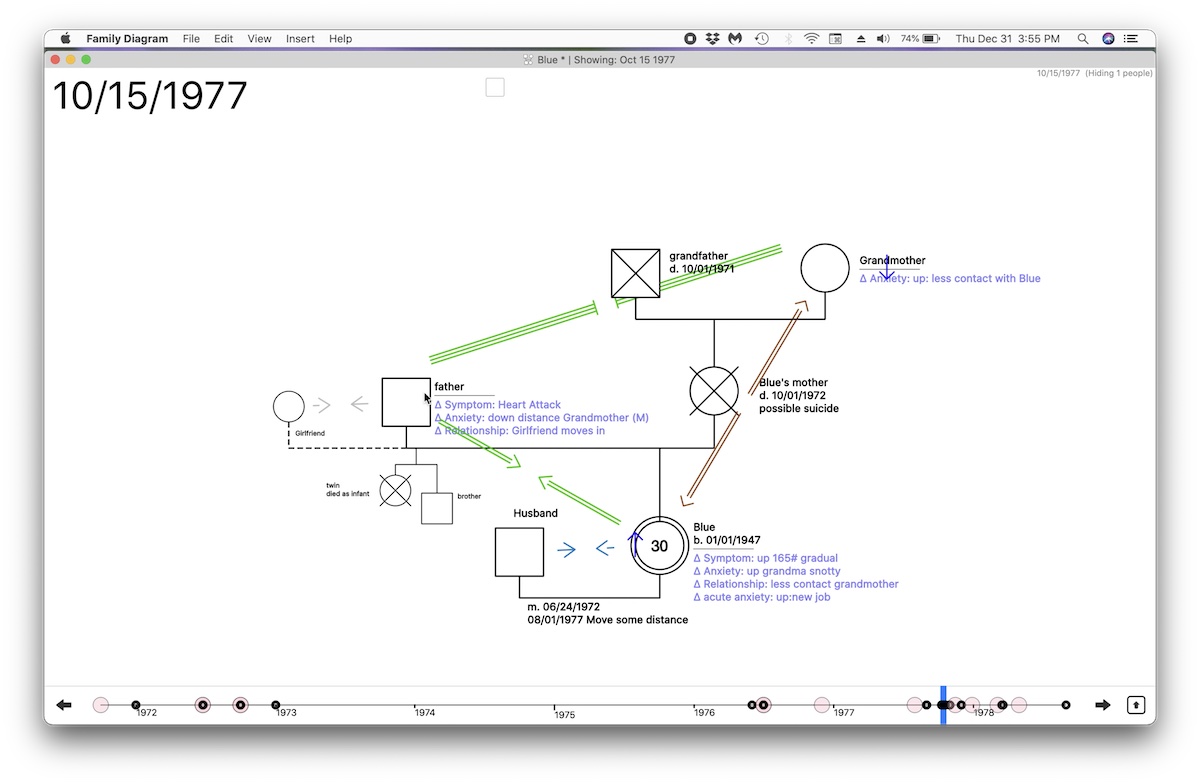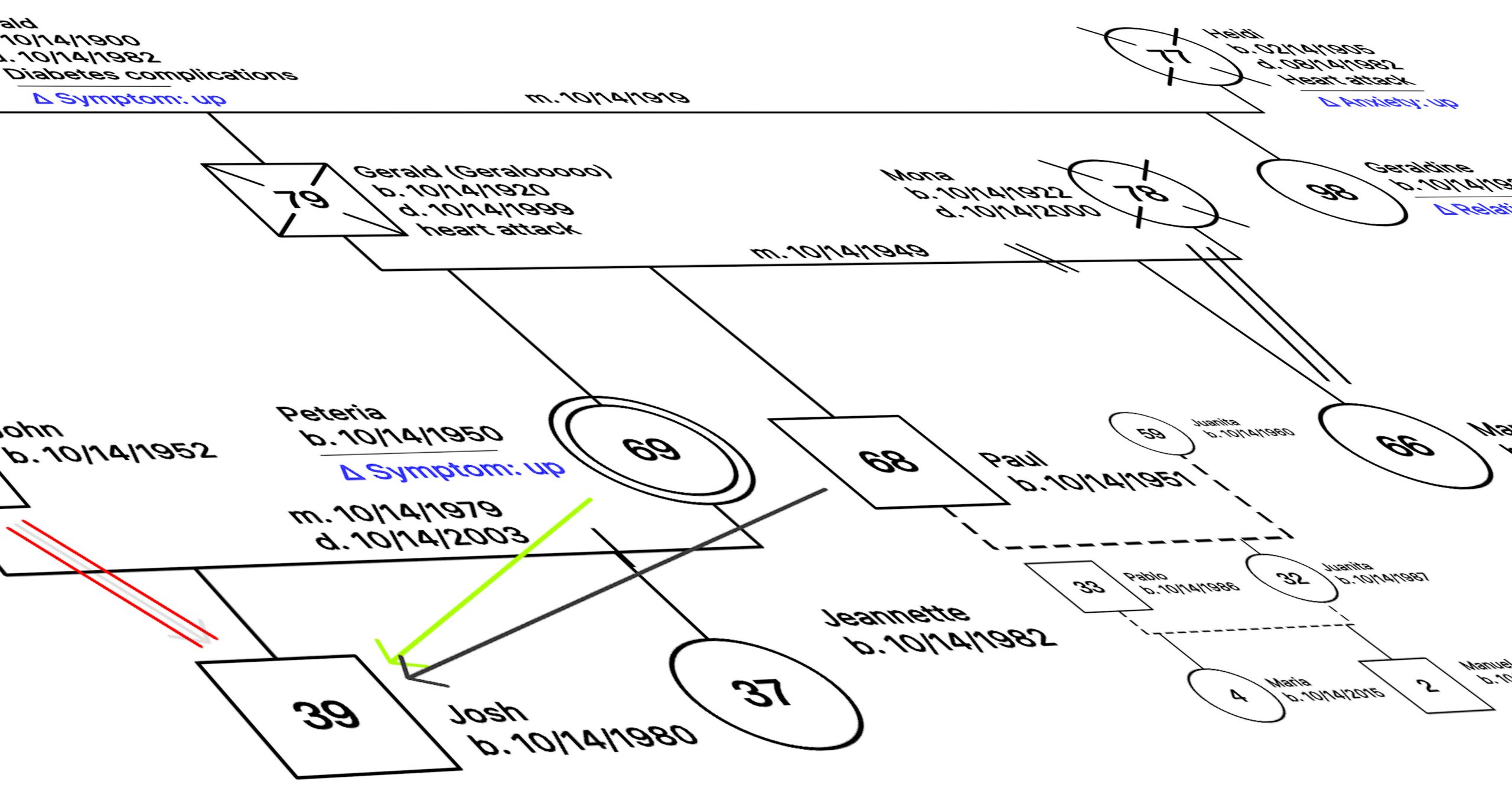A formal data model is required to scale systematic research of clinical assessment under Bowen Theory. Currently the de facto state of the art (in terms of number of referrals or references) is Chapter 10 of Michael Kerr’s 1988 book Family Evaluation. But this peice is only in narrative form and not a concise data model with a topology of fields/variables, their possible ranges.
Contribute! Need for Definitions and Example Vignettes
Conducting an assessment, i.e. filling out the data model for a single case, requires the clinician to have reliable definitions for each of the fields in the model. Each definition cannot just be an abstract idea, it needs to inform the clinician when that term it is and is not occurring in a specific case.
It is now possible to use AI to automatically detect occurrences in a written or audio transcript so long as enough accurate example definitions are supplied. AI can mathematically triangulate on a single definition by finding the similarity in all of the examples.
This is a fundamental innovation for Bowen Theory because in effect, current definitions for all terms are too fuzzy/subjective to be nailed down to a single sentence or phrase or mathematical formula. They are always qualitative/prose and not quantitative/numerical, require being explained in many different ways to capture all the different parts of the term, etc. All of this keeps research at the eyeball level, which does not scale to large projects, is prone to human error, and ignores the AI revolution let alone the computer revolution in the world.
For AI to help with this, many accurate written definitions need to be compiled for all the terms in Bowen Theory. These examples need to be generic, i.e. not use names or a single case but be written in a way that applies to every family. There is a section on what generic definitions look like below.
There is also a need for specific examples and counter examples using names, etc. Examples for real cases are best. Then, specific examples for each term need to be compiled. Examples use names and pertain to a single case, they are not generic like the definitions. There is a section showing what examples look like below.
THIS IS ALL MEANT TO BE CROWD SOURCED. It is too tedious for any one person to complete this list. Please reach out with any feedback or contriubutions here.
Explicit Definitions of Variables
Variables here are occurrences that shift up and down in quantity. In statistical lingo, all variables here are ordinal. There are no literally quantitative variables in the state of the art, i.e. interval or ratio.
Threat
- Sufficient combination of uncertainty and urgency to elicit a reaction.
- Can occur without anxious response, indicating either buffering from relationships or high functional self.
Anxiety
- The behavioral response to real or imagined threat
- Thoughts race, HPA axis activates, heart rate increase, extremities temperature drops.
Tension
- Energy with negative emotional valence around misalignment on important issues
- Can linger beyond the exchange that it originated from
- Extinguished by alignment
Symptom
- Any physical or behavioral/emotional issue that a person wants to go away.
- For BT chronic symptoms with difficult to predict treatments are more salient
- Classically meaning a psychiatric diagnosis
Self
There are definitions pertaining to quadrants in the Differentiation of Self scale, these need to be included here.
- How well a person knows what they believe and how strongly
- How well a person knows what they value and how much
- Knowledge of how a person is different to any other person
- Knowledge of how a person is similar to any other person
- Ability to act out the above
Basic Self
- The lowest, uncompromising level of self
- Inferred from many data points over time (need required window)
Functional Self
- Fluctuations over basic level
- Able to plan further in the future instead of reacting at the moment.
- Able to consider feeling/emotion/value together with long-term, intellectual factors.
- Able to think in terms of goals instead of feeling good
Shift up
- Able to plan further in the future instead of reacting at the moment.
- Able to consider feeling/emotion/value together with long-term, intellectual factors.
- Able to think in terms of goals instead of merely feeling good
- Being sure of beliefs and convictions but never dogmatic or fixed in thinking.
- Able to hear and evaluate the viewpoints of others and discard old beliefs in favor of new.
- Being sufficiently secure within themselves that functioning is not affected by either praise or criticism from others.
- Able to respect the self and the identity of another without becoming critical or becoming emotionally involved in trying to modify the life course of another.
Shift down
- Becoming emotionally dysregulated when you would usually remain steady.
- Operating increasingly in a feeling-based world.
- Operating in a way determined by being responsive to emotional harmony or disharmony about him as opposed to free from it
- Feelings can soar to heights with praise or approval or be dashed to nothingness by disapproval.
- So much life energy goes into ‘loving’ and seeking ‘love’ and approval that there is little energy left for self-determined, goal-directed activity
- Important life decisions are based mostly on what feels right
- Success in business or professional pursuits is determined more by approval from superiors and from the relationship system than the inherent value of their work.
- Having some awareness of opinions and beliefs from the intellectual system but the budding ‘self’ is usually so fused with feelings that it is expressed in dogmatic authoritativeness, in the compliance of a disciple, or in the opposition of a rebel
Relationship Shifts
Relationship shifts are adaptations to discomfort/threat/anxiety. Bowen Theory proposes that using these is evidence of increased anxiety. They temporarily solve the problem of calming a person or group down but also represent inefficiency moving toward goals.
Triangles
Positive examples
- A perceived alignment between two people about their alignment or misalignment with a third.
- A triangle always has two people on the inside position together and a third on an outside position alone.
- A triangle functions to temporarily alleviate discomfort in a single, possibly a third person.
- The person on the outside is uncomfortable/anxious.
- The people on the inside become comfortable/less anxious.
- Person A moves to get Person B to agree that Person C is bad; person A and B are on the “inside”.
- Person A moves to get Person B to agree that Person C is good; person A and B are on the “inside”.
- Person A becomes uncomfortable, and seeks an inside position.
- Can occur between a single person and a group of people, such as a group of siblings, tribe, or political group, even all people in the world (e.g. in the case of depression)
Negative examples
- Alice and her father were talking about her mother’s death the other day.
- Ted posted about how the democrats voted against the republican bill today.
Anxiety Binding Mechanisms
Each of the four mechanisms have the following:
- Implicated in a child’s symptom development when between spouses, but often used more broadly.
Distance
- Avoiding certain topics to manage tension around misalignment
Conflict
- Overt argument; yelling, even violence
Overfunctioning / Underfunctioning Reciprocity
- Underfunctioning: One spouse consistently functions lower than the other
- Underfunctioning: One spouse consistently defers to the other for decision making
- Underfunctioning: One spouse consistently giving up self for the other
- Overfunctioning: One spouse consistently doing things for the other that they can actually do for themselves
- Predicts that the chronic underfunctioner would start functioning up if the chronic overfunctioning takes a dive in functioning for any reason
Child-Focus
- An unrealistic focus of attention on real or imagined problem in a child.
- Must be unrealistic because it is driven by tension between the parents as opposed to the reality needs of the child.
- Usually leaves the mother on a close inside position with the child, and father on a distant outside.
- A child is suggested to be the recipient when they have more life problems, symptoms, and basic level of self.
Cutoff
- Severance of communication between offspring and parent for much longer than is typical for that relationship.
- Driven by inability to manage tension; the tension of misalignments around important issues
- Does not include mere migration, professional reasons, usually indicated by a desire to reconnect
- Usually initiated by offspring
Example Vignettes
Example and counterexample vignette for each of the terms are used along with explicit definitions to train AI models to detect occurrences in transcripts. The more examples and counter examples the merrier. Humans can edit the examples including assigning positions of the people involved. The following items show what examples and counter examples for each term look like.
Anxiety
Positive examples
- Vignette: I remember hearing about the market crash and all I could think about was if I was going to lose my job.
- Valence: up
- Person: I
- Vignette: Yeah, I guess it was after landing the big contract that Molly started sleeping well again.
- Valence: down
- Person: Molly
Negative examples
- vignette: I remember hearing about the market crash and getting upset about it.
- vignette: It was about the time that my father died that my Crohns acted up
- (there is no direct evidence here that anxiety increased, just speculation)
Relationship Shifts
Triangles
Positive examples
- Vignette: Alice is upset about her relationship with her mother and seeks validation from her brother.
- Inside A: Alice
- Inside B: her brother
- Outside: her mother
- Vignette: Dave is stressed about his performance and fears his boss, Eve, dislikes him. He confides in coworker Frank, and they bond over criticizing Eve.
- Inside A: Dave
- Inside B: Frank
- Outside: Eve
Negative examples
- Vignette: Alice is upset about her relationship with her mother and gets in an argument about it
- Vignette: Bob argues with his mother every Sunday about the weather.
Anxiety Binding Mechanisms
Conflict
Distance
Reciprocal Functioning
Child-Focus
Functional Self
Basic Self
Cutoff
By now you probably get the idea for the rest of the terms….




